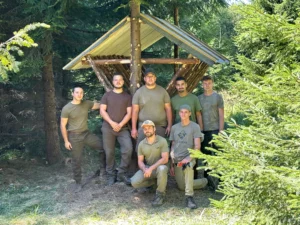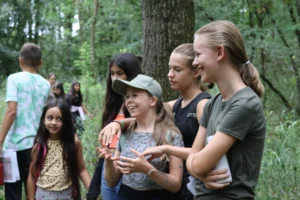In our summer internship diaries series, we share the experiences and lessons learned from internships over the summer. In our first article, we presented the events of the two-week internship in Nagybajom, and now Bence Buni, a forestry engineering student at the University of Sopron, shares his experiences of the six-week internship between 17 July and 25 August 2023.
First week of the exercise (17-21 July)
On 17 July, I arrived at the exercise site at 9 o'clock in the morning. I then attended a thorough accident prevention and fire safety training session, then settled in and spent the rest of the day spraying electricity in the area. The next day, Sándor Németh, the exercise leader, and I toured the management area, during which we talked a lot about the different wild land and big game utilisation, and later that afternoon I managed to catch my first ever golden jackal with Sándor's help.
The following morning, we started early to make high ropes in the area in view of the heat - every morning of the week started like this. On Tuesday, after building the high passes, we focused on maintaining the stalking trails in anticipation of the approaching deer rut, as this is one of the most important parts of successful sightings and kills. On the same day, in the afternoon, I was responsible for sorting and sorting nearly 1000 jackal skulls as part of a research project, and in the middle of the week, the main task was electric shepherd maintenance, where the only important thing was to replace the batteries of the power supply units. As we approached the weekend, a relatively large number of high passes were still being prepared in the cooler hours of the early morning, and then it was on to the game hunt, which took up a whole morning. After lunch I was busy with trophy making. I worked on the jackal I had killed and a wild boar tusk, which took nearly 2.5 hours including cooking. During the cooking time, we prepared fox stomachs for Friday's tests. The last day of the week was spent mowing electric flocks.
Summing up the first week, I gathered a lot of useful information about the area, the use of wild land, jackal monitoring, but apart from that, I was able to see a lot of things that you can only experience in practice.
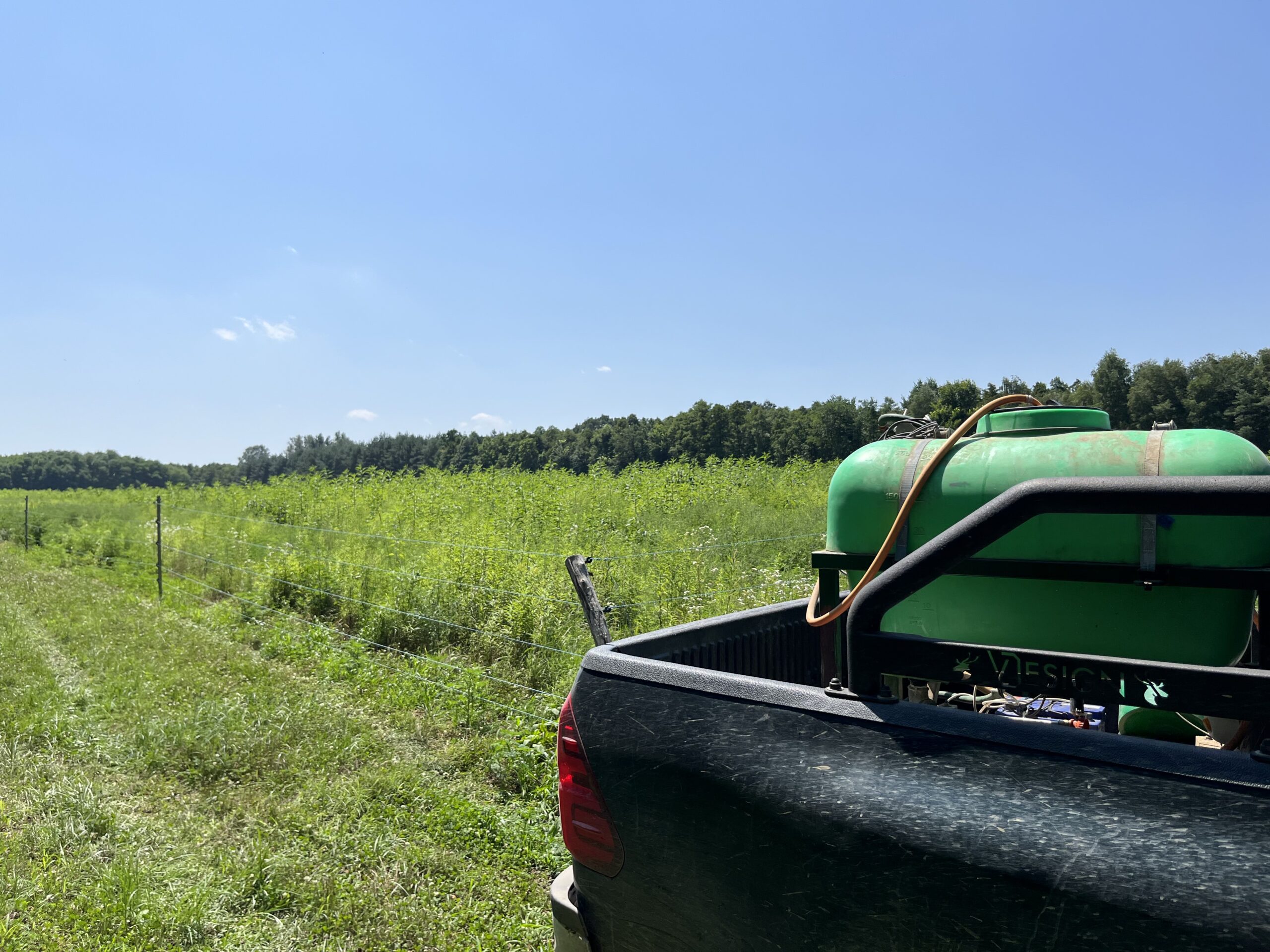
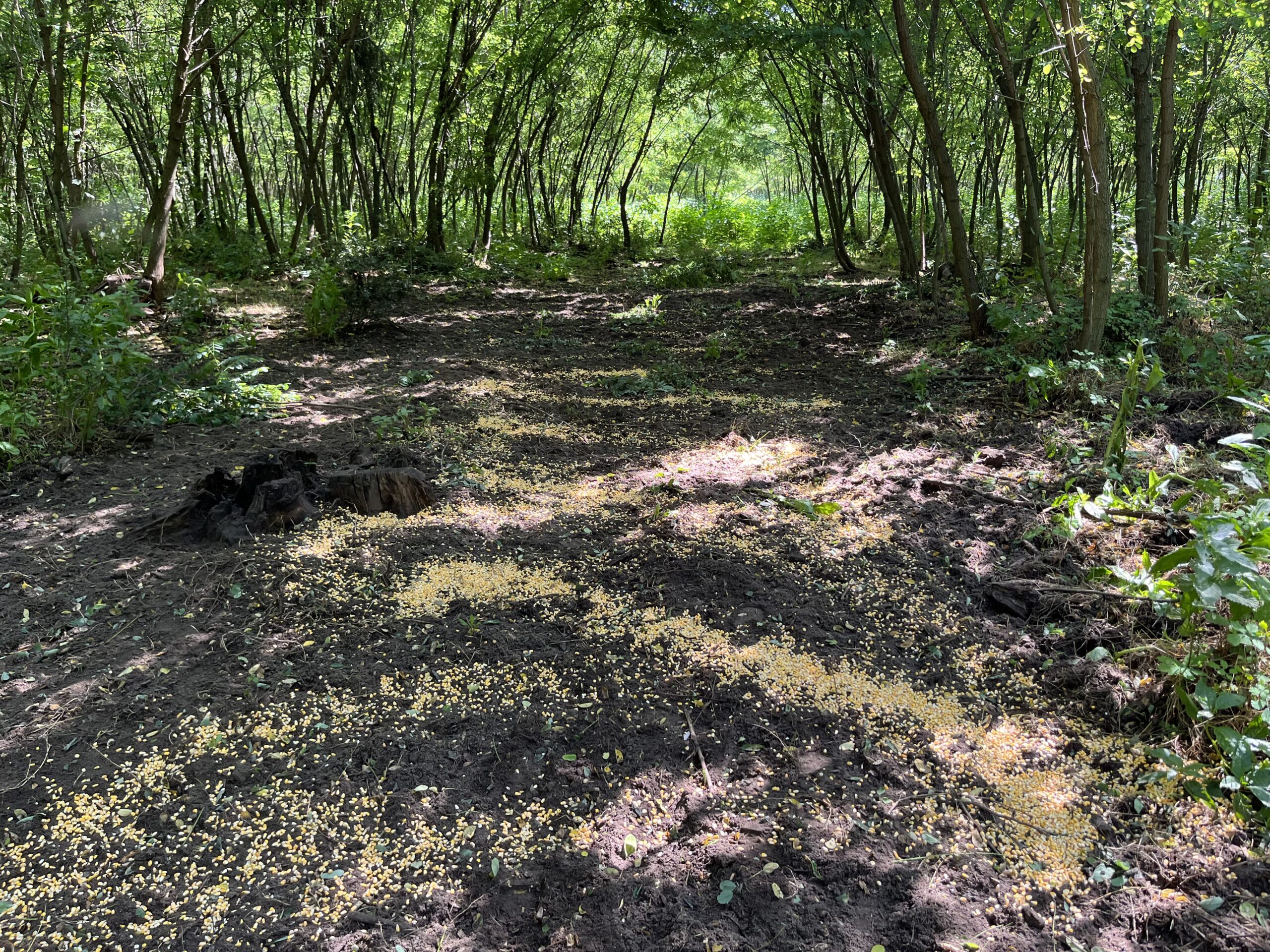

Second week (24-28 July)
We started the week in the usual way, with a hunt. This is important not only to reduce the damage to the game, but also to concentrate the game in the area. It is also useful for rearing the offspring of wild boar and deer. For the rest of the day, a "green shoot" was conducted to get the partially trapped game out of the partially fenced area. This was largely successful, but the following day we started with a check of the electric fence, as the animals had damaged it on their way out. Once this problem was solved, we did not move away from the issue, as electric fence maintenance is also very important at this time of year. On Wednesday, work was suspended due to the storm during the night and morning, but fortunately the weather warmed up and the rain stopped in the afternoon, so we were able to carry out the electric fence inspection.
By Thursday morning, we managed to finish the preparation of the high alpine chalets, so all the high alpine chalets were ready to take their places in the hunting area. As there were a lot of locks made and the rut was getting on, we should not delay the placement of the locks, so we started on Friday. Besides the work, there was plenty of time for game viewing, which was the main activity. This week the bulls had already started to clean their antlers for the moulting season and it is at this time that a lot of emphasis is placed on monitoring them, as the professional hunter has to identify the animals he wants to take out of the herd.
This is not as easy as you might think, because at this time of the year - during the cleaning period - the deer are not moving as much together, so we were able to get a closer look at the bulls not from a single ambush, but by stalking them.
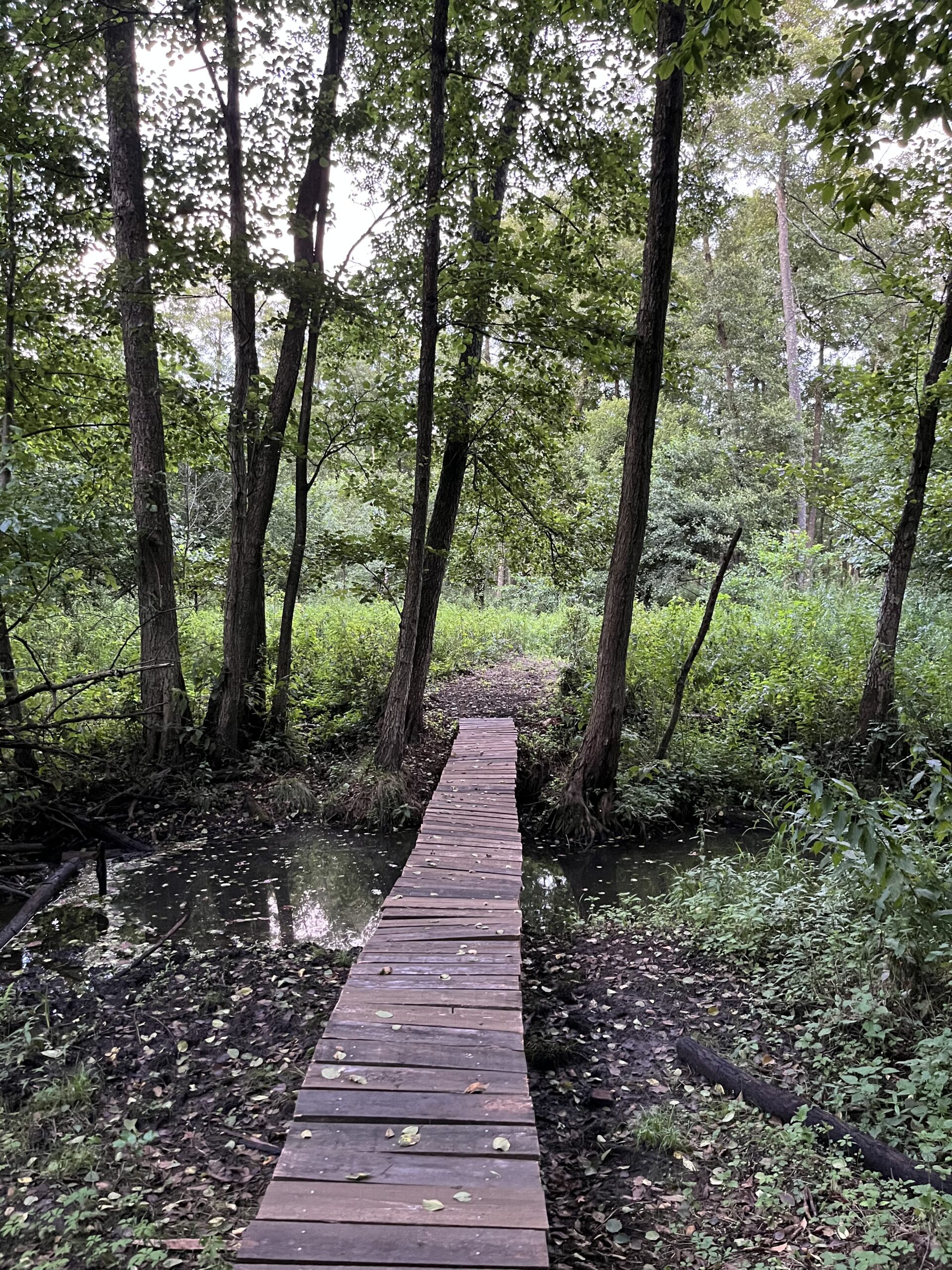
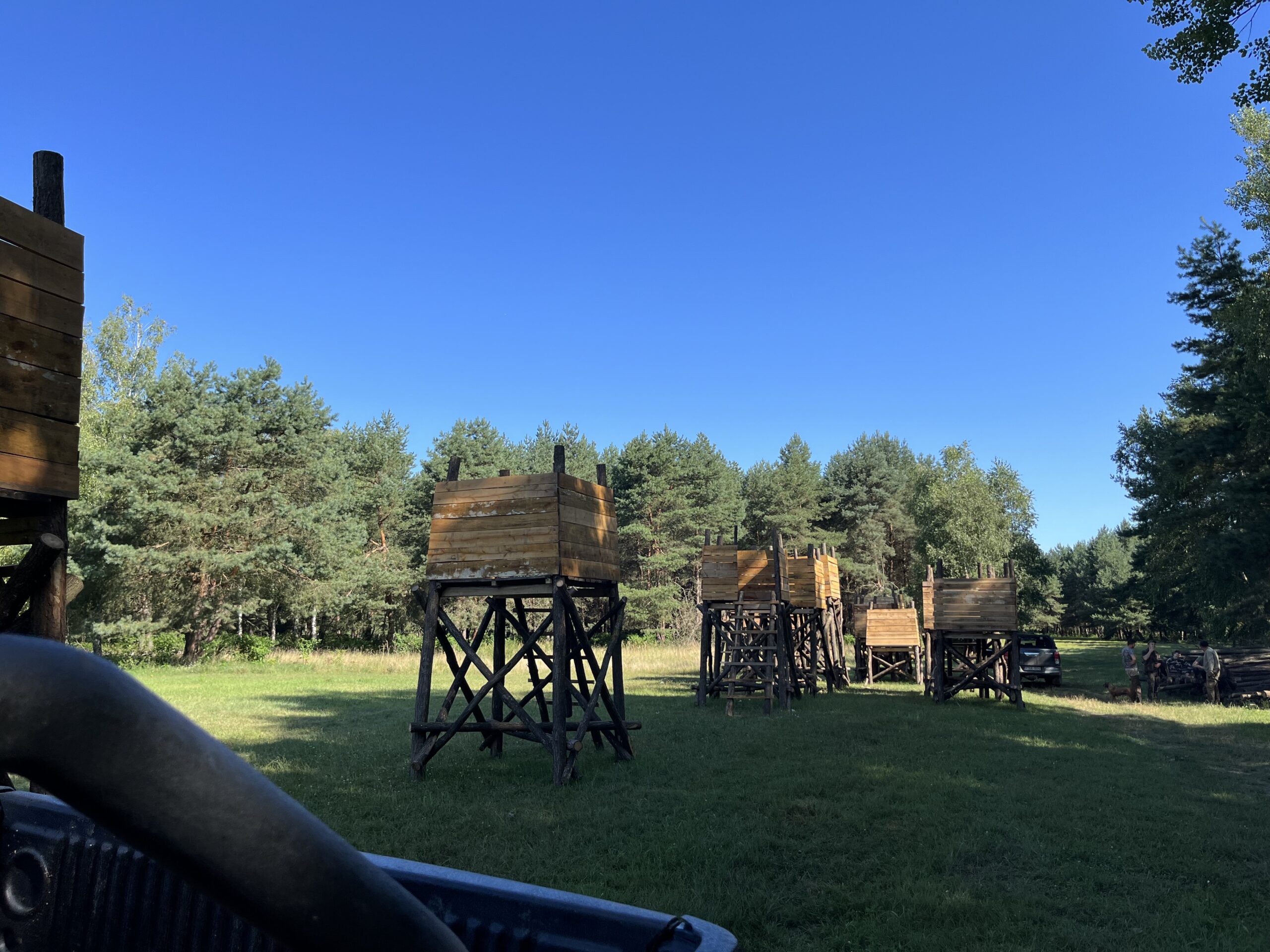
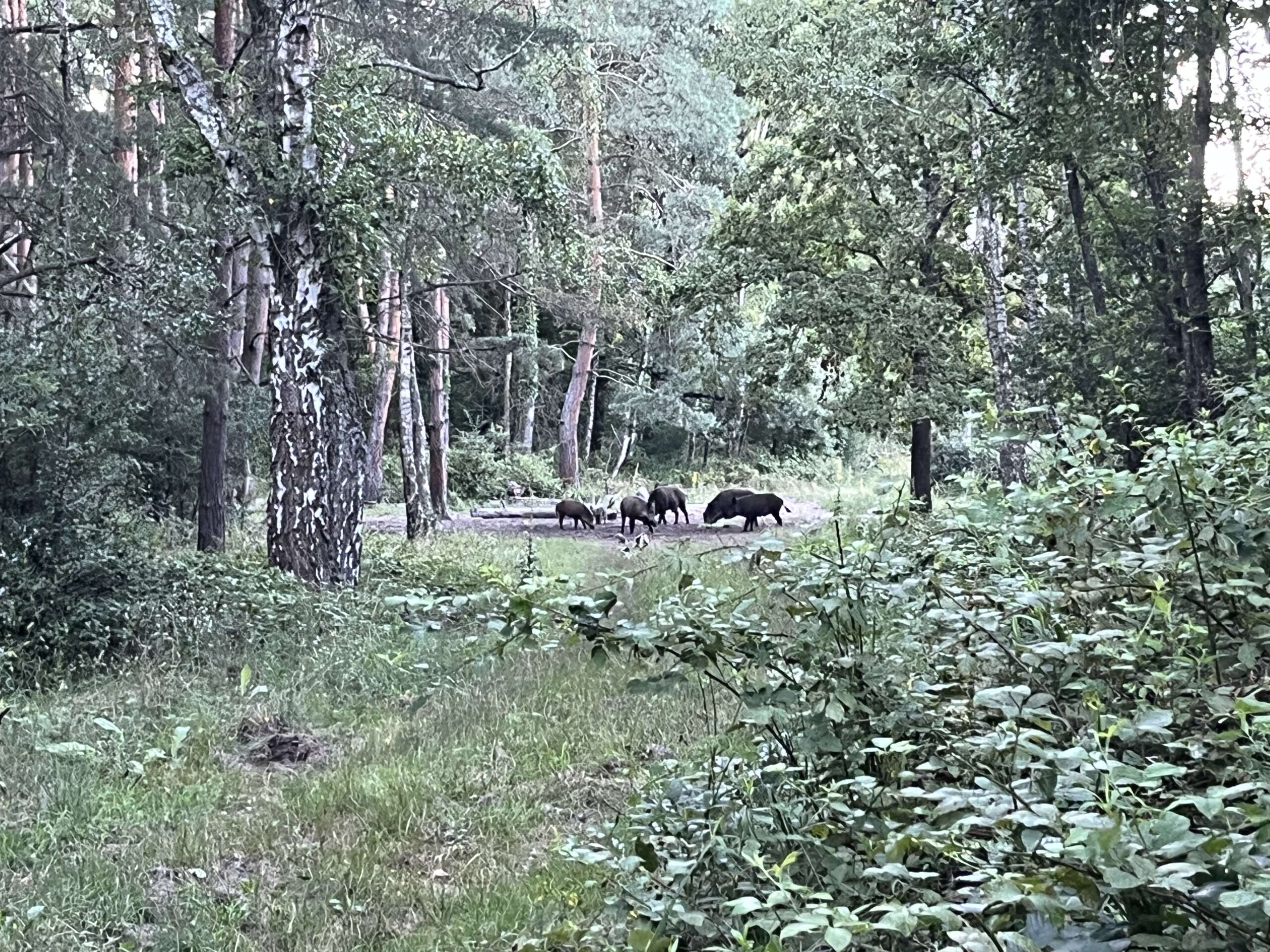
Third week (31.07-08.04.)
On Monday, we started the day with a routine hunt, which is now becoming really important for the wild boar, as we are about to capture some of them for the wild boar garden. The rest of the morning was then spent maintaining the electric fence and mowing the electric fence, but these didn't really take up much time despite being really strenuous work. After lunch, there was no stopping the work of spraying the electric shepherds. The next day we continued with the transport of some of the remaining highlanders from the previous week to the hunting ground, but in the middle of the week it was back to the feeding, and then the damage to the electric fences caused by the overnight rain and storm had to be repaired. At times like this it is very important, perhaps even crucial, to protect the forage crops in the right way and with the right quality to avoid huge damage, as this is the most desirable time for big game to mature. On Wednesday, in the late afternoon hours, I was able to attend the training of Mr. Sándor Németh, the faithful hunting companion of the chief hunter, where the main task was retrieving, and then in the evening hours there was time for hunting, where we roamed the Inner-Somogyi Forest with Péter Horváth, one of the professional hunters of the area. As the weekend approached, there were still some high alpine meadows to be delivered, so we spent our time on Thursday. Since a high jump is not a featherweight, it was time to relax in the late afternoon.
On the last working day of the week, I managed to tackle a completely new task. It was the sampling of jackal stomach, which was carried out in one of the laboratories of the MATE Kaposvár campus.
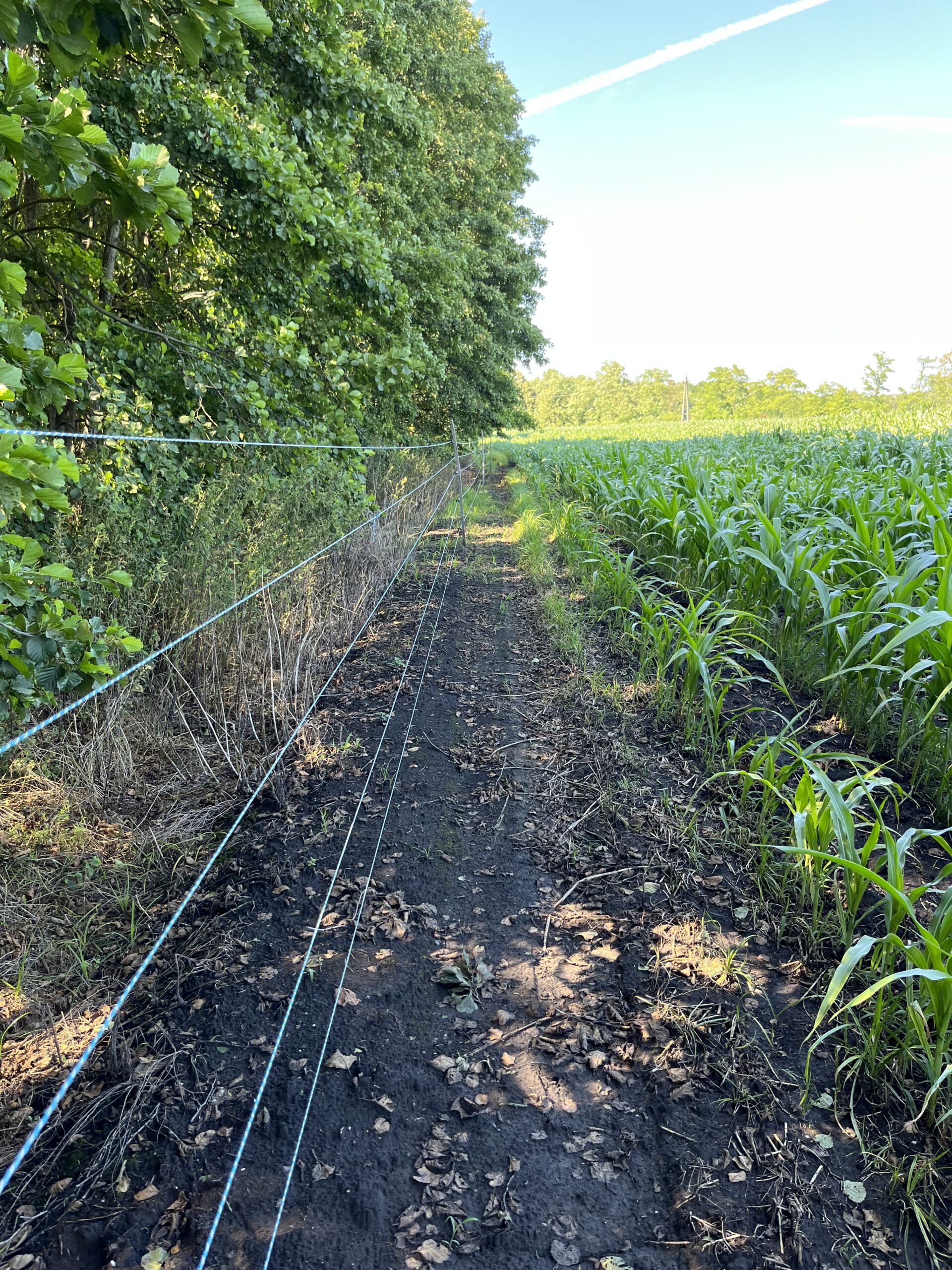
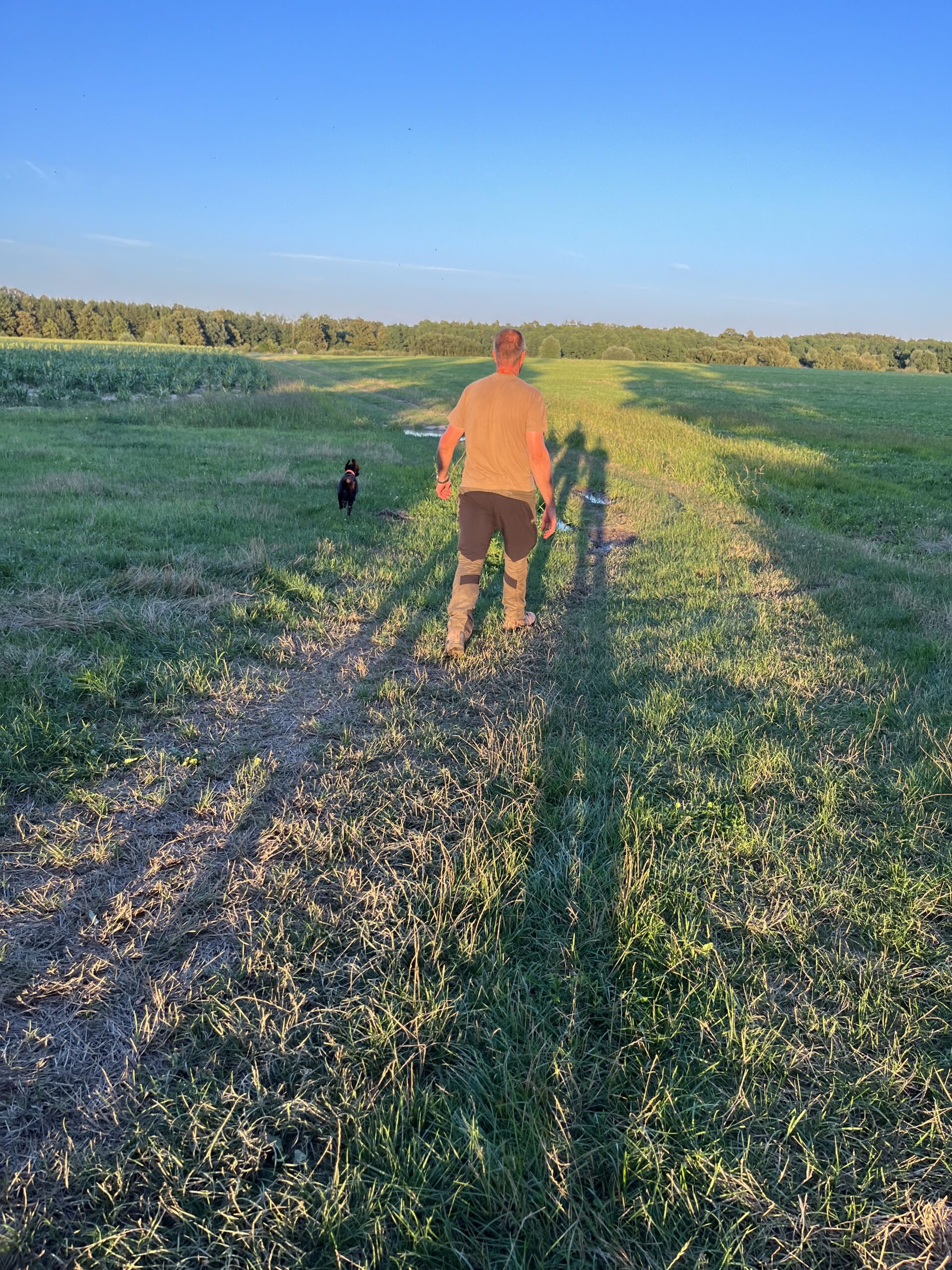
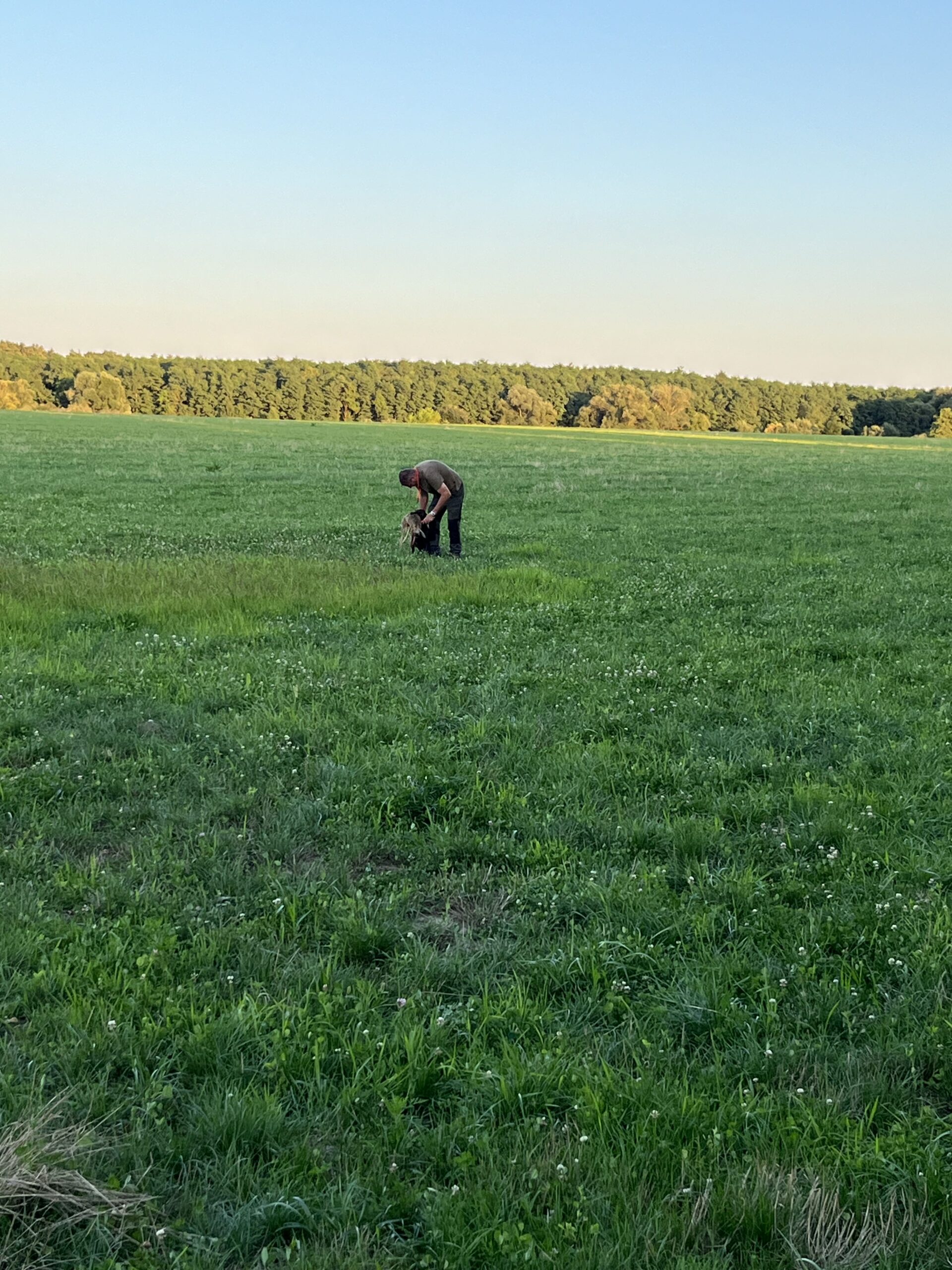
Fourth week (08.07-11.)
August 7 is another Monday, but the pressure is a little higher as August is already a busy month not only for bull deer, but also for professional hunters preparing for the September rut.
Perhaps I'm not telling you anything new by saying that this is the time of year that hunters look forward to the most. It's when time seems to speed up. With this in mind, we put all our energy into maintaining the stalking trails and high passes, two of the most important factors for successful hunts during the rut.
Fortunately, cleaning up existing, well-established stalking routes is a simpler and easier process than creating a new one, so we were able to move faster. On Tuesday, we took a break from this work as the feral pig trapping also started. At this time it is essential to check the traps at daylight, as it is unfortunate if the animals spend too much time in the trap. Especially if there is a problem, which we have encountered, where instead of wild boars, a stag with its calf has wandered into the catcher, but thanks to our timely arrival, they were able to leave the catcher in good health. The wild boars were not so lucky, they were transported from the trap to the boar pen. Then on Wednesday we continued with the maintenance of the stalking paths and high passes, which we were fortunate to have completed in one part of the hunting area, but there was still plenty to do for next week. In the second half of the week, we spent two days on the maintenance of the electric fence, as the weather had made the weeds appear again, so we spent two days on that. Then on Friday we closed the week with a hunt.
One of the new things for me this week was the wild boar trapping, even though I had already learned about it in theory and had already assembled a trap in practice, this was the first time I was fully involved in the task. I have gained very useful information about the location of stalking routes and high passes, which I think will be useful for me in the future.

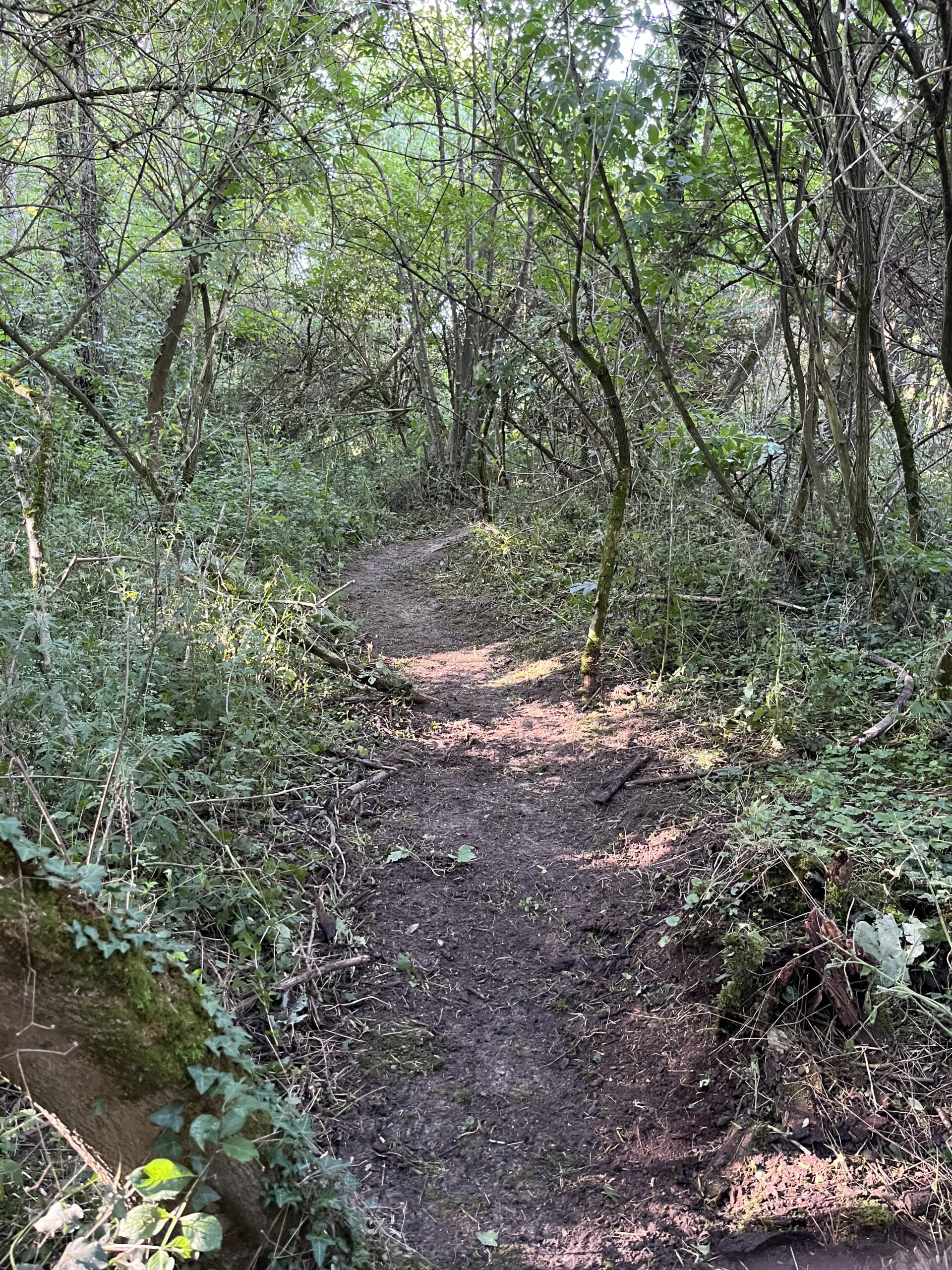

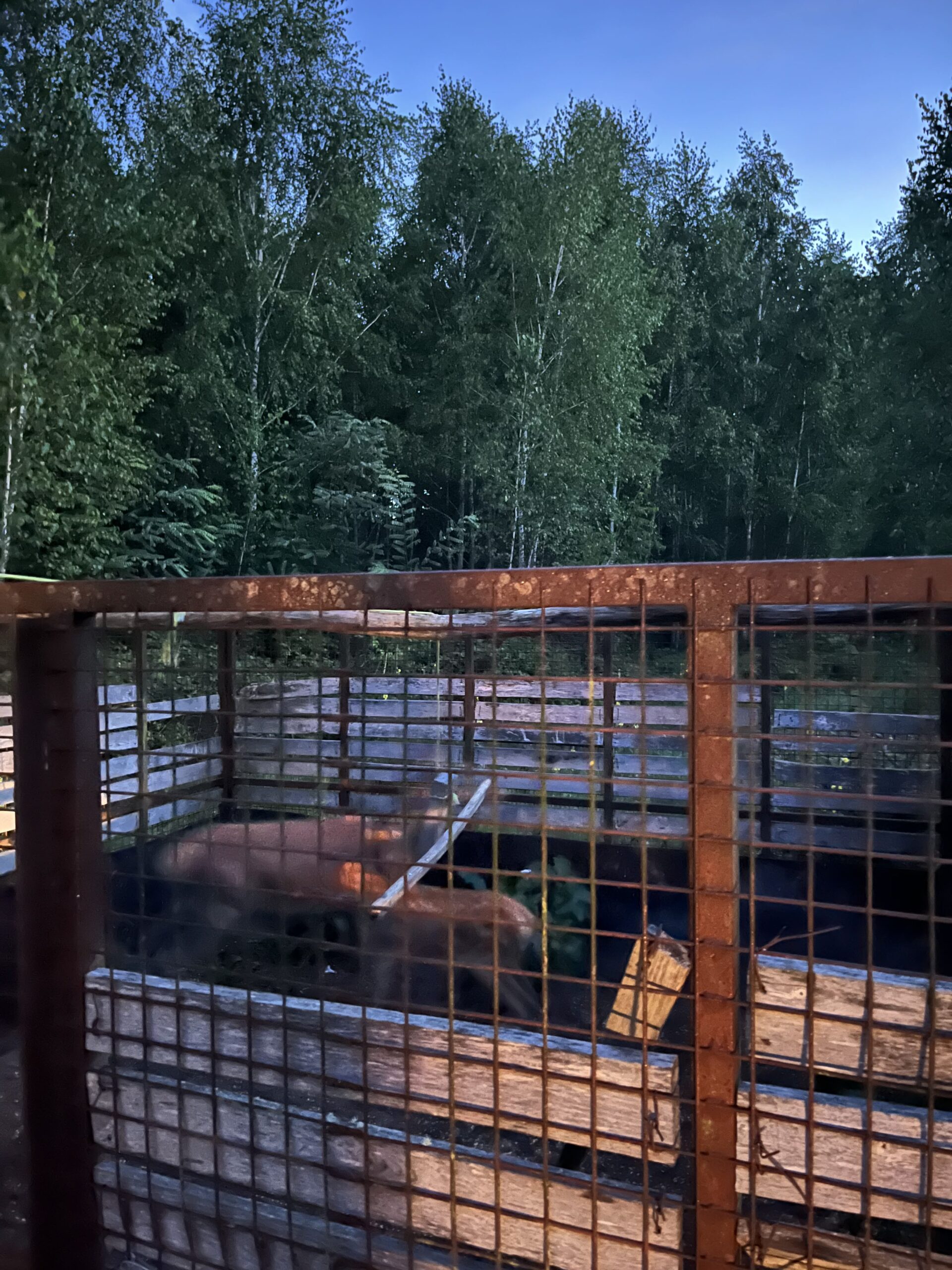
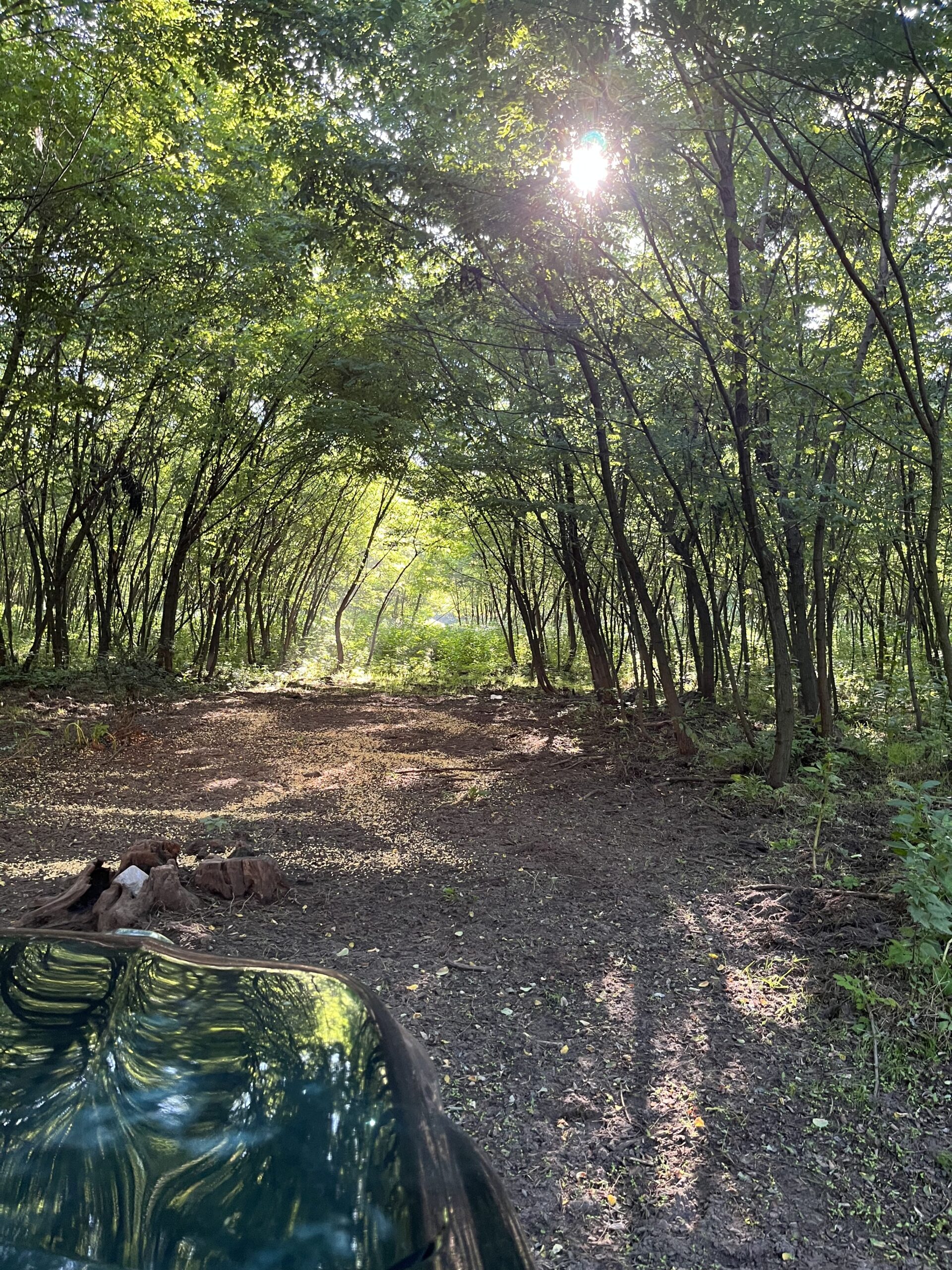
Week 5 (14-18/08)
This week we have been putting the finishing touches to the high passes and scout trails. All the proper cleaning and spraying has been done to the maximum this week, leaving little to tidy up for next week. The weather was not kind to us this week, as it was a man-trying heat wave. We tried to avoid this by getting up early, but unfortunately this was not always a solution. In the evenings we often saw the stags with their trophies ready, some of them showed their beautiful talent for the throat, but this is just the tuning.
With September fast approaching, the professional hunters and I spent a lot of time outside in order to have a good look at the kings of the forest, as it is important to have a good knowledge of the species you want to hunt. We met several bulls we had known for years. It's a beautiful time of year!
In the first half of the week, thanks to Mr. Sándor Németh, I had the opportunity to spend a day at SEFAG's forestry in Nagybajom. I got acquainted with the specific elements of forest management in Inner-Somogy, the more modern computerised forestry planning software, the annual timber harvesting operations and the work processes and steps involved. I also gained important information about forest management, forest restoration and forest regeneration in the area. I also learned about a lesser known interaction between conservation and forest management.
Unfortunately, in the last half of the week, an agricultural area thwarted our calculations when we checked the electricity pastor here. Unfortunately, we found that chaos had taken over and weeds were fully grown, which had knocked down the power and minimised its impact. This needed to be rectified immediately as it opens up the potential for a large amount of wildlife damage. This took the whole of Friday, so no wild boar trapping took place this week.
I think I finished another meaningful and useful week in Nagybajom, as I was able to deepen my knowledge of the importance and design of proper stalking trail systems, which I probably realized when we had the opportunity to use them and get close to the game during one evening. In addition, I was able to gain a lot of new information in terms of monitoring and hunting bull elk.
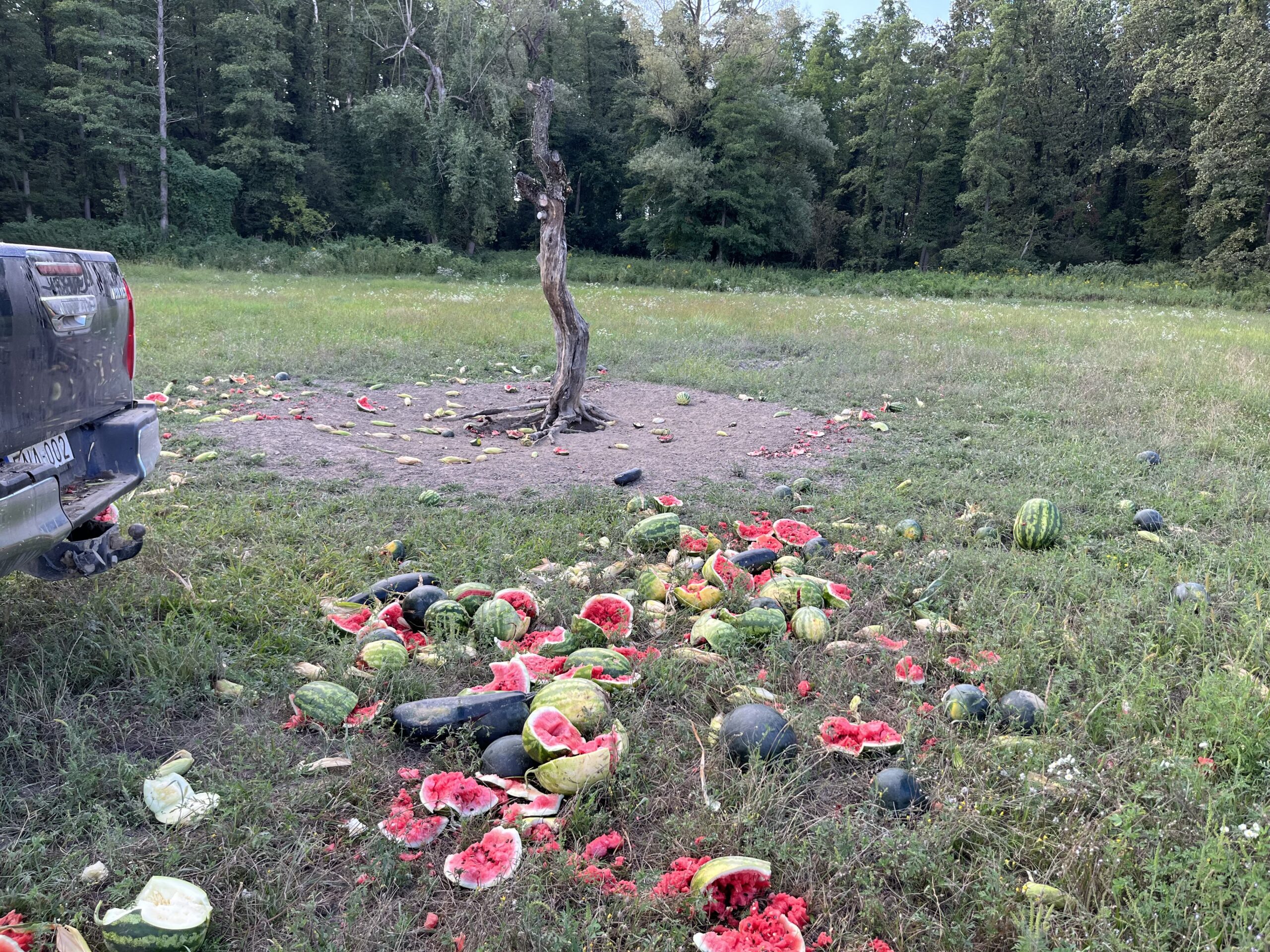


Summary of the exercise
I think I would rather write a summary of the past six weeks than a report on my last week. It is a bit difficult, as the memories and emotions are still very fresh.
On the first day of the exercise, I was in a new environment for me, as we did not know each other with the professional hunters. Fortunately, I can say that I am not afraid of such situations, so the adjustment was quick, but the professional hunters' helpfulness helped. I had not previously been on a traineeship of this kind and had no experience of how to approach and relate to the tasks, the professional issues and other professional situations that arose, so the situation was strange for me at first. The knowledge that I brought with me I learned from other hunting professionals, which I was able to use here, in addition to learning a lot of new skills from the professional staff here.
I think I was able to spend the right amount and quality of time with each of the professional hunters, so I got all my questions answered and thanks to their help I learned a lot about the profession, both in practice and in theory.
I have been very accommodating to everyone on the professional staff over the past few weeks and I don't think they have disappointed me, nor have I disappointed them.
On 25 August, after the end of the working day, we got together and shared the experiences of the past weeks - good and bad - and thanked each other for our work together. I think that in just a few weeks we have developed a very strong friendship with professional hunters, one that I hope will last a lifetime.
Overall, I had a very good time during the exercise and was happy to carry out all the tasks assigned to me. I hope I will have the opportunity to come back here to Nagybajom for similar exercises.
Cover photo by Bence Buni
